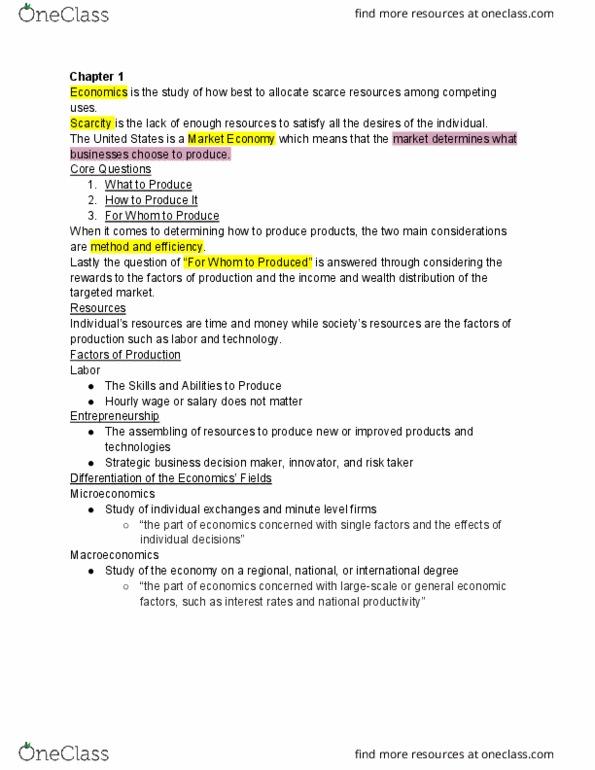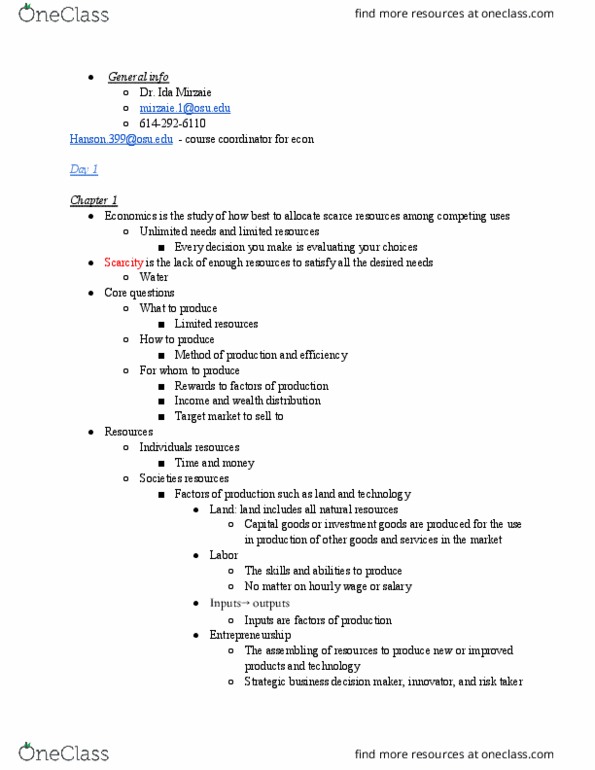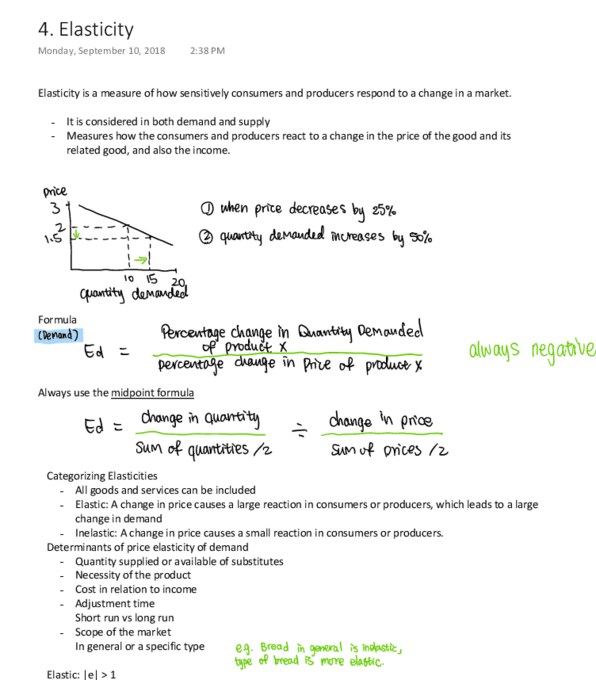| Price Elasticity | Income Elasticity | Cross-Price Elasticity |
| |ep| > 1 | Elastic | ei < 0 ei > 0 | Inferior good Normal good | ec < 0 | Complementary good |
| |ep| < 1 | Inelastic | 0< ei < 1 ei > 1 | Necessity Luxury | ec > 0 | Substitute good |
| |ep| = 1 | Unit Elastic | | | | |
Technical Questions
Using the elasticity table (above), you have the following information for your product: (1) The price elasticity of demand is -2.0; (2) The income elasticity of demand is 1.5; and, (3) The cross-price elasticity of a related good is -3.5. What can you determine about consumer demand for your product from this information?â¨â¨
Using the elasticity table (above), you have the following information for your product: (1) The price elasticity of demand is -.9; (2) The income elasticity of demand is .5; and, (3) The cross-price elasticity of a related good is 2.0. What can you determine about consumer demand for your product from this information?
What are the three determinants of price elasticity of demand
What are the three determinants of price elasticity supply?
Name and describe the three kinds of product innovation.
Name and describe a marketing approach (that we discussed in class) that can be used to understand consumer behavior and/or estimate demand.
Name and describe a statistical approach (that we discussed in class) or technique that can be used to understand consumer behavior and/or estimate demand.
Name a psychological model (that we discussed in class) that can be used to understand consumer behavior and/or estimate demand.
Name and describe the six types of consumers.
How do fixed and variable costs differ in the short-run and long-run?
Jim is considering quitting his job and using his savings to start a small business. He expects that his costs will consist of a lease on the building, inventory, wages, electricity, and insurance.
11A. Identify which costs are explicit and which are opportunity (implicit) costs.
11B. Identify which costs are fixed and which are variable.
What is the law of diminishing returns? What are economies of scale and diseconomies of scale? Be sure to note the terms apply to the short run and the long run.
Application Questions
1. How can entrepreneurs shift elasticity of demand and elasticity of supply? Draw on the three determinants for each in your answer.
2. How can entrepreneurs be innovative in production for the short-term and the long-term? Draw on concepts like diminishing returns, diseconomies of scale, and economies of scale in your answer.







